There is something quite satisfying in sailing silently through towns and villages in a bright metallic green Hybrid supercar in EV mode. In one village three locals engaged in conversation with their backs turned to the road did not even see us.
Had the V6 bi-turbo combustion engine been online there would undoubtedly have been swivelled of heads and pointing, but the group remained blissfully unaware that a space-age machine had just driven past.
The counterpoint in another village was the young man who eyeballed the car enthusiastically. I wonder how long it took him to realise that the customary ferocious supercar soundtrack was missing?
A new experience
People do not know quite what to expect when you tell them that the McLaren Artura is a hybrid supercar. Even a decade on from the debut of the LaFerrari, McLaren P1, and Porsche 918 Spyder the genre is not exactly commonplace even in this fast approaching EV age.
So what does that even mean in terms of the big numbers that interest car enthusiasts? Good packaging and low emissions were top of the list in the Artura design brief, and it was clear that McLaren would have to increase efficiency and lower the CO2 emissions of its new PHEV (Plug-In Hybrid EV) supercar quite drastically without compromising power or driver engagement.
Downsizing from a 4.0 litre V8 to a 3.0 litre V6 and adding an E-motor was a start. Most V6 engines have a 90-degree included angle, which makes total sense as major manufacturers like Mercedes offer a V6 as part of an engine family that uses similar components for its V8 and even V12 motors.
McLaren had no such constraints here, and the 120-degree included angle design delivers the two key advantages of allowing both turbochargers to be placed within the Vee, further helping to lower the centre of gravity of the power unit. At 160kg, the V6 is 50kg lighter than its V8 cousin, and sits an advantageous 40mm lower in the car.
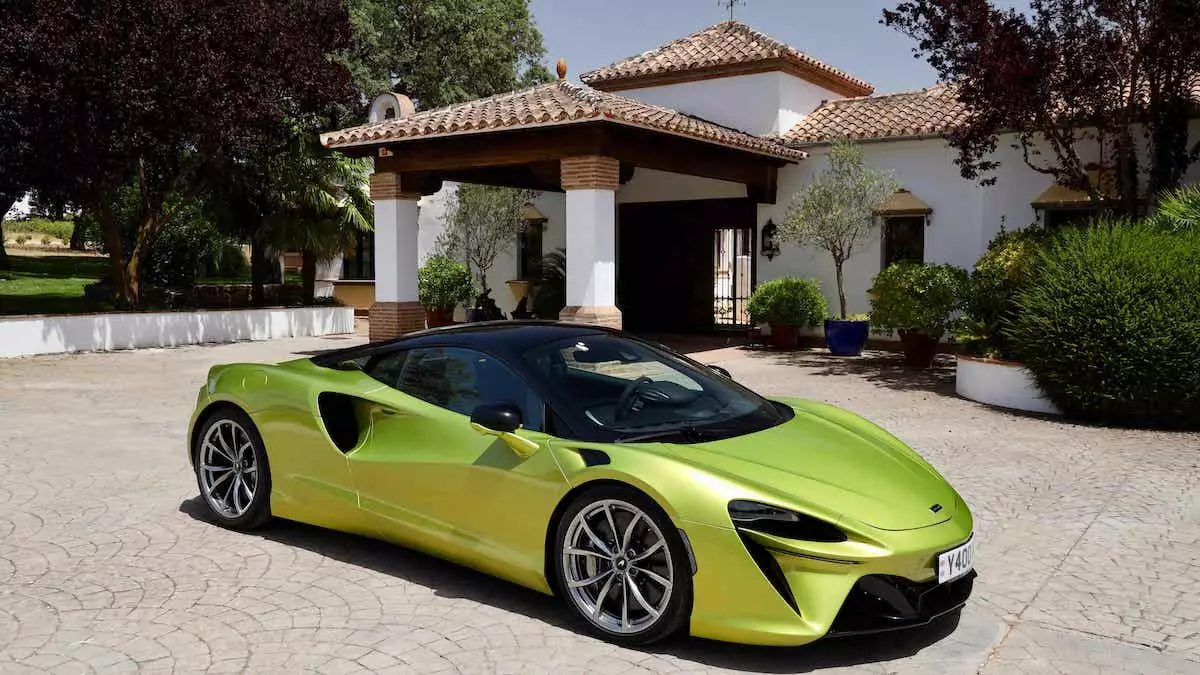
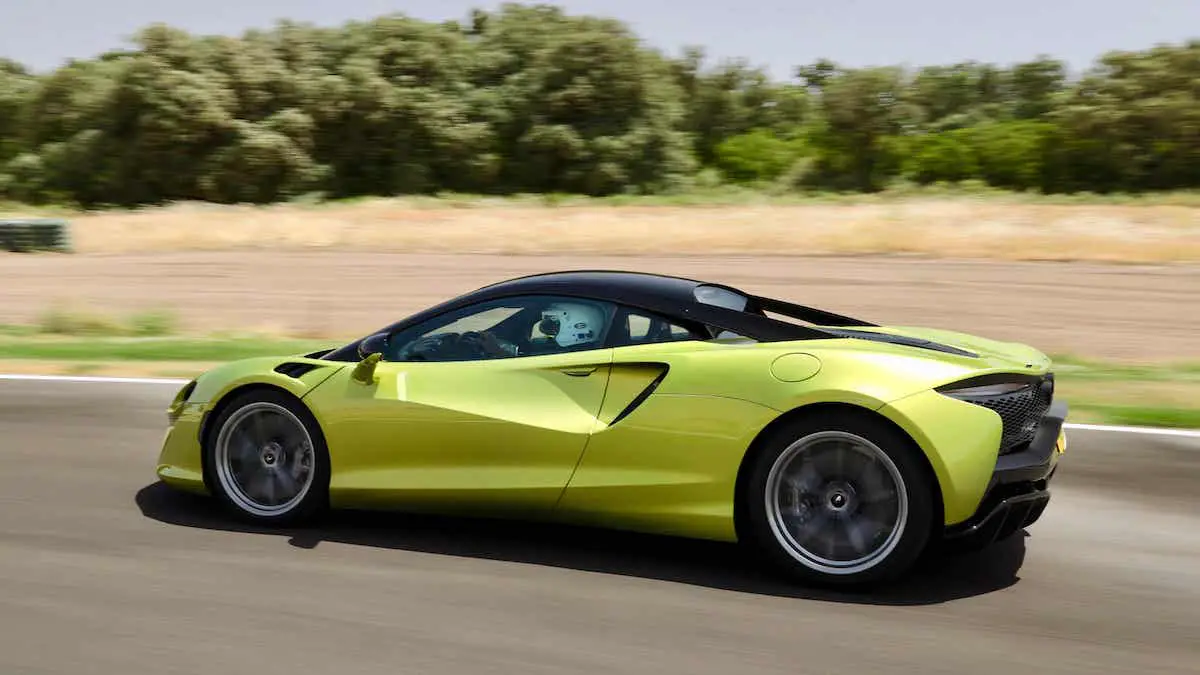
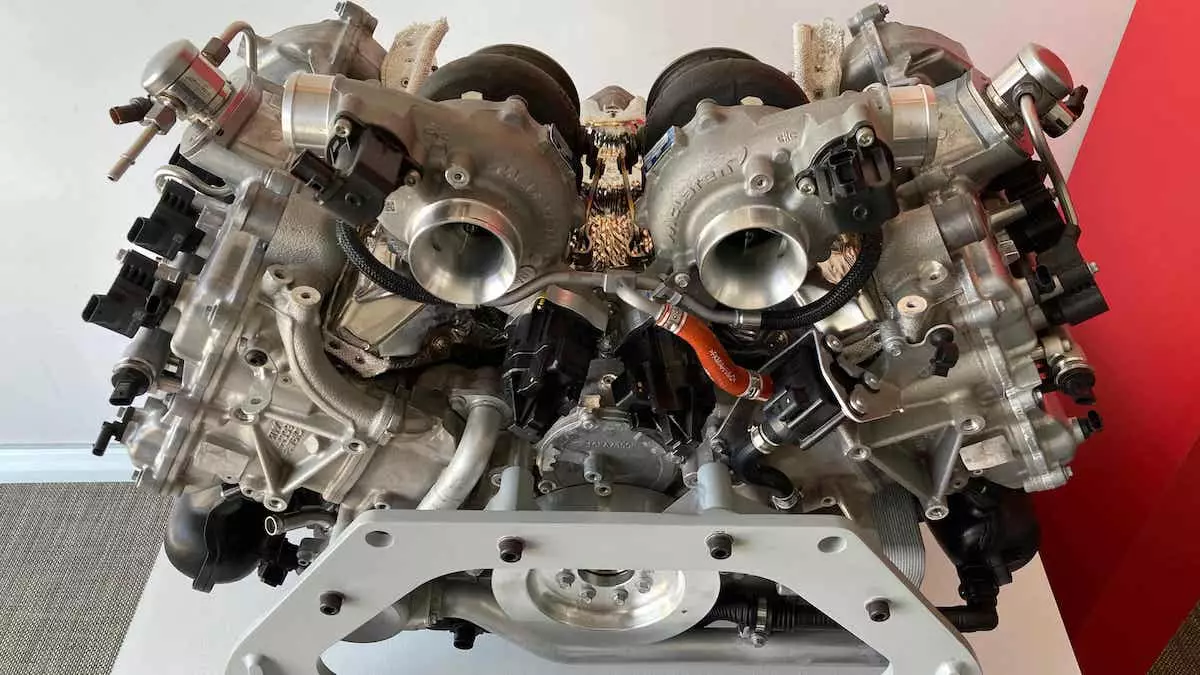
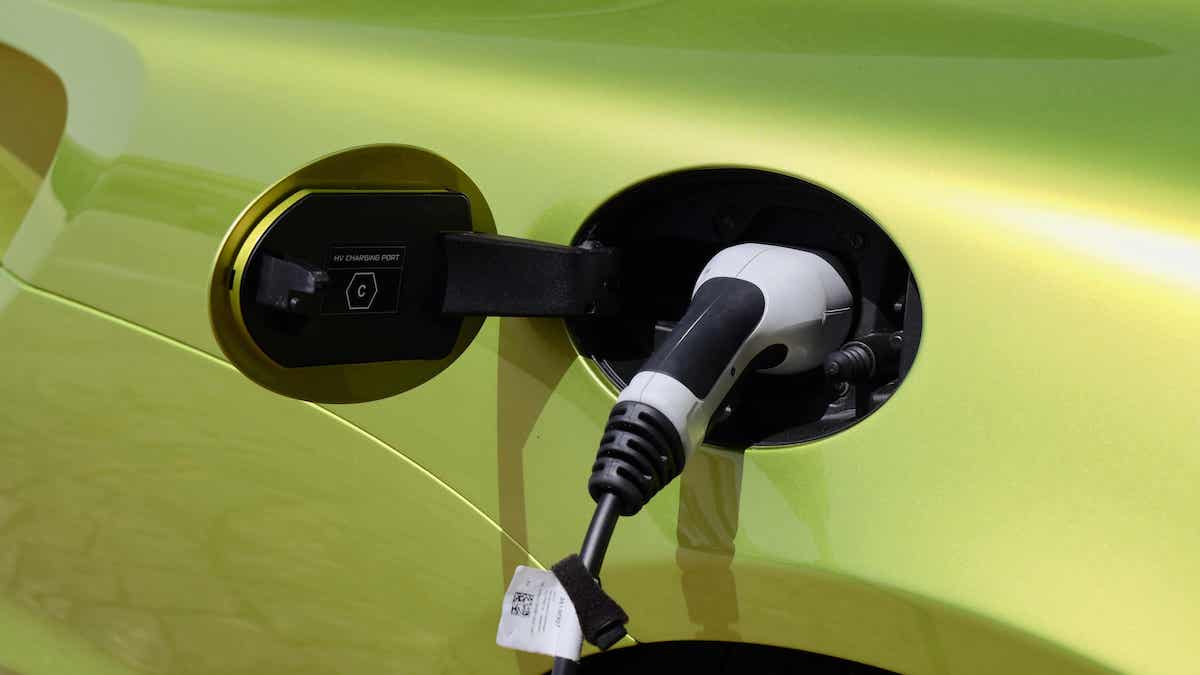
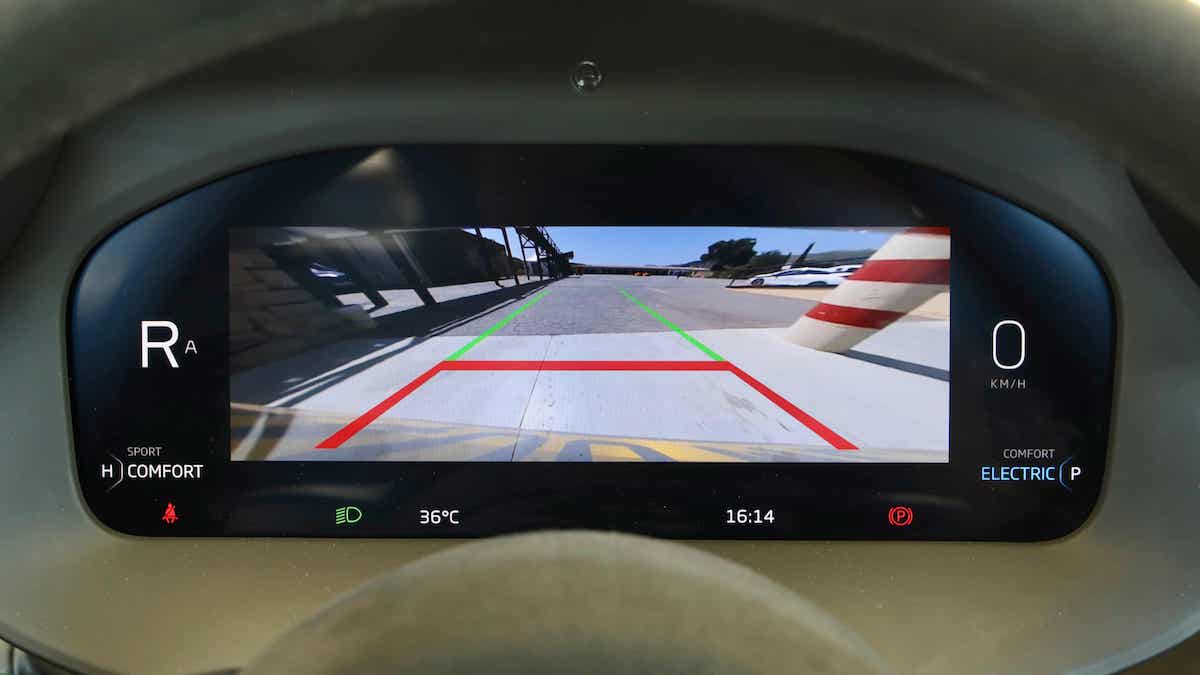
Marriage of convenience
McLaren’s all-new M630 2,993cc twin-turbo V6 motor coupled to an Axial Flux E-motor results in 585hp (200hp/litre) and 95hp, with 531 and 225 Nm of torque respectively. The combined power units produce an impressive 680hp at 7,500rpm, underpinned by 720Nm of torque at 2,250rpm, delivered to the rear wheels via an eight-speed dual-clutch gearbox. As the E-motor is used for Reverse as well the mechanical gear cluster is commensurately shorter, further contributing to the compact drivetrain package. The car always starts in E-mode as the default setting unless the charge is so low that the combustion motor is required.
The V6 has a unique sonic signature that is actually hard to describe in words as the unorthodox firing pulses of the 120-degree included angle forces you to recalibrate everything you thought you knew about V6 soundtracks. Most people’s first experience of this will probably be via a YouTube video!
Sporting efficiency
Low weight is a massive contributor to efficiency, and McLaren’s expertise in lightweight technologies has allowed them to pursue the Hybrid drivetrain path with little compromise in vehicle weight. The 1,395kg dry weight and 1,498kg with fluids and a 90% full fuel tank give the Artura has an impressive power-to-weight ratio. Aided by its eight close ratio gears and the extra traction of the E-differential it rockets to 100km/h in just 3.0 sec, passing 200km/h in 8.3 sec and 300km/h in 21.5 sec. Top speed is electronically limited to 330km/h, or 205mph in old money.
Thanks to the EV mode the CO2 emissions are just 104g/km, with a potential combined fuel economy of 61.5mpg or 4.6 l/100km. The relatively low weight also helps braking performance, and the 390 mm front and 380 mm rear vented carbon-ceramic discs with six-pot and four-pot forged alloy callipers respectively, haul the car to a stop from 100 km/h in just 31m, and from double that speed in 126 m.
The McLaren Artura has a carbon-fibre core
McLaren stands out in the supercar world for its use of carbon-fibre centre tubs across the range. The clear advantages of a carbon-fibre tub with high torsional stiffness to which a suspension system with superior elasto-kinematics and a wider performance bandwidth is attached cannot be overstated.
The Artura benefits from an all-new carbon-fibre central tub design and this is wrapped in exterior body panels made from Superformed aluminium, a process that allows the production of larger, seamless panels of consistent thickness and greater strength.
The MCLA carbon-fibre monocoque is made at McLaren’s MCTC facility near Sheffield. Back at McLaren HQ in Woking the tub is mated to aluminium front and rear frames and chassis structures that provide a modular crash absorbing system that can be replaced after a minor accident. The battery safety cell is in the rear.
Subwoofers perfectly integrated in the chassis
The fact that McLaren has milked this construction philosophy to the hilt, even incorporating the sub-woofers of the B&W audio system into the front of the Artura’s carbon-fibre tub, speaks volumes for their walking the walk as a motorsport technology driven company.
The front suspension is a development of the system used in the 600LT, but the rear multi-link suspension is all new, 10% lighter, and with a reduced centre of gravity compared to the previous double-wishbone system. This is matched to McLaren’s adaptive dampers and a front-lift function that works off the same circuit as the hydraulic power steering.
The Artura has a 42/58% front/rear weight distribution, and we note from the tyre pressure monitor readout that the static pressures are set at 2.2 bar all round.
Given the rear biased weight distribution this shows that McLaren works the Artura’s front-end relatively hard.
Curve junkie
The benefits are felt at both ends of the speed spectrum, and on the recently resurfaced 26 corner, 5.4 km long Ascari Circuit near Ronda in Southern Spain it quickly became apparent that the bespoke 235/35R19 and 295/35R20 Pirelli PZero Corsa tyres fitted with the revolutionary Pirelli Cyber Tyre interactive information system help to endow the Artura with copious levels of mechanical grip and progressive limit handling.
Mounted on 9.0J x 19-inch and 11.0J x 20-inch forged alloy wheels these tyres deliver a level of front-end grip beyond what I was expecting. Normally if you run slightly wide on turn-in to a tight bend and then try to add more steering the front end will wash out in understeer. However, you can lean on the front of the Artura like the 600LT. Increasing the steering lock slightly simply tightens the line, bringing the nose towards the apex.
E-motor boost for road and track
The two corners at Ascari where this is most apparent are Oulton and Gachot, slow and tight left and right handers respectively. Relatively slow they might be, but the copious torque boost from the E-motor means they are best taken in third gear rather than second for the best balance between preserving momentum and not overwhelming available grip.
When you are carrying considerable speed through the sequence that links Bathurst, The Kink and the fast sweeping late apex Mike Greenhalgh you really appreciate the way the front and rear suspension work together perfectly as lateral acceleration builds with velocity.
The nose points very directly with great feel from the finessed hydraulic steering, while the new multi-link rear end with its greater toe stiffness is dialled in to follow its bidding in a perfect Torville and Dean dance act.
All the way through this third gear sequence you sense the supplementary thrust from the E-motor pushing the big rear tyre contact patches to the point where you can detect the E-differential subtly working away in the background right on the limit of mechanical grip.
Sideways dance
Exiting Mike Greenhalgh with a whiff of power oversteer you straighten the steering wheel and totally commit down the short straight. Snatch fourth with the right paddle shifter before cresting the brow, and in an instant you are into the braking threshold of one of the three sections of this track that really work the carbon-ceramic anchors hard. Then you drop to third with the left-hand paddle as you transition from hard braking into trail braking, aiming the nose towards the apex of the tight left-hand Gachot bend that leads onto the back straight.
In Track mode you can tweak the ECS Dynamic mode through 15 levels to vary the amount of slip while still maintaining the ESC safety net in extremis. Thus an experienced driver can have fun on a trackday within the boundaries of the immutable laws of physics. The ESC system can also be totally switched off.
Brundle, the first kink on the back straight, is taken flat in fourth in a road car of up to 200hp. Beyond that power level and a confidence lift is required. However, the Artura’s voracious appetite for accumulating speed means that you arrive at Brundle needing a serious stab at the brakes before applying some steering angle to soar over the right-hand kerb.
Full afterburner
After Brundle you extend the car in fourth and drop into fifth briefly before dialling in a few degrees of steering to take the second, more open right-hand kink flat out. Normally there is a time gap of about three seconds between the kink and the braking threshold for Sebring, the right hander at the end of the straight. But in the Artura I hardly found time to take a breath before having to really stand on the brakes and drop two ratios while lining up for the trail-braking entry-point into Sebring.
The well of electrified torque is so seamlessly added to the mix, so intrinsically part of the Artura’s smooth power delivery all the way to the red line, that you end up going much faster than you think. Its raw ability to build speed and the ease with which it is handled by the exquisite chassis definitely requires some recalibration of your senses, and indeed your reference points on a track that you know well.
Sitting comfortably
The counterpoint is a road car with clearly thought out driver and passenger ergonomics. The cabin of the Artura is McLaren’s best yet, and offers a choice of Comfort and Clubsports seats. My road-only test car had the former while the track-only car at Ascari had the latter, which save 12kg across the pair. The amount of effort that they have put into designing this patented Clubsport version results in a seat that potentially fits a far broader range of drivers.
Less complex than before in terms of buttons thanks to a clever rationalisation process, control operation is straightforward and user friendly. Importantly, the graphics and typeface used on the instrument pack and infotainment system are crisp and easy to read and bereft of any of the coloured flashing lights and sometimes hard-to-assimilate graphics that plague the displays of Italian rivals.
The Power rocker control on the right side of the binnacle allows the driver to toggle between EV, Comfort, Sport and Track modes with a Manual button that locks the gearbox in the chosen ratio. The equivalent Handling rocker on the left controls the suspension modes and ESC off.
Practical connectivity
Three USB ports are situated in the central storage compartment under the leather-wrapped central armrest. Apart from a phone charging power point McLaren has seen fit to install both a legacy USB-A as well as a USB-C plug-ins. As I view the more fragile USB-C connection as a liability in a car that does not save any real estate my reaction to that is “Hallelujah!”
Good ride quality, whether with active or conventional suspension systems has always been a McLaren strength and that has not changed with the Artura. Also impressive is the lack of road and tyre noise conferred by the Pirelli P-Zero tyres thanks to the special sound deadening material inside. The 570GT of 2017 was the first McLaren to use this sound deadening technology, and it is a great bonus if you use the car for long trips since excessive road and tyre noise is stressful over time.
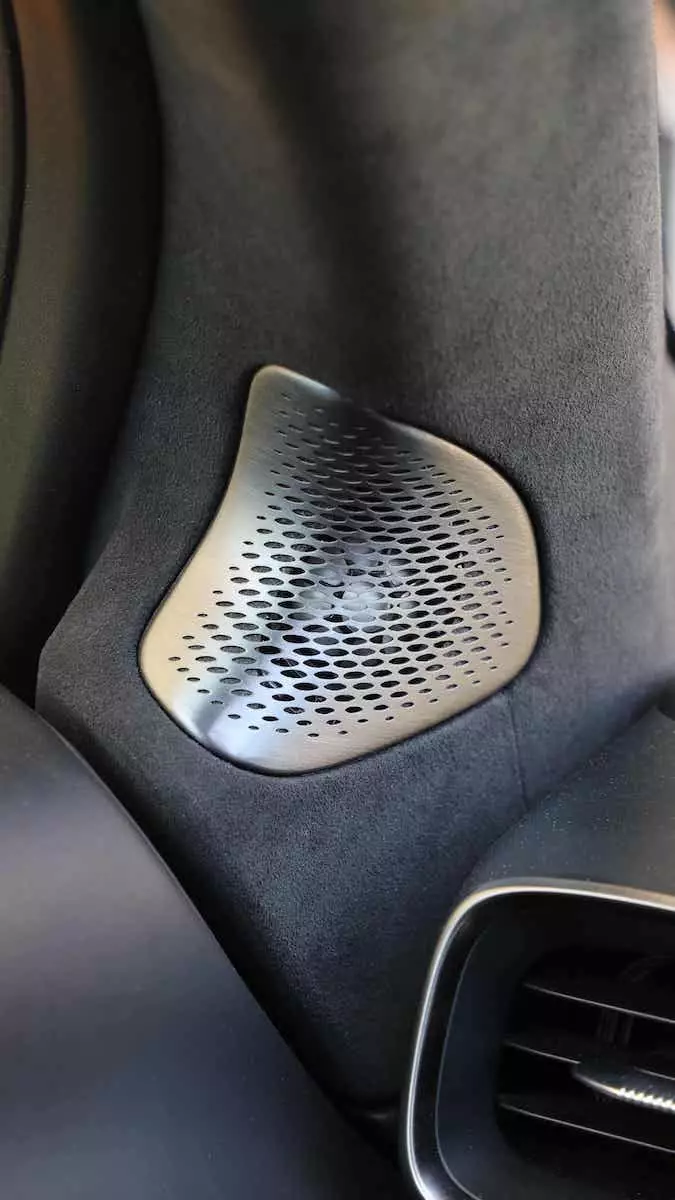

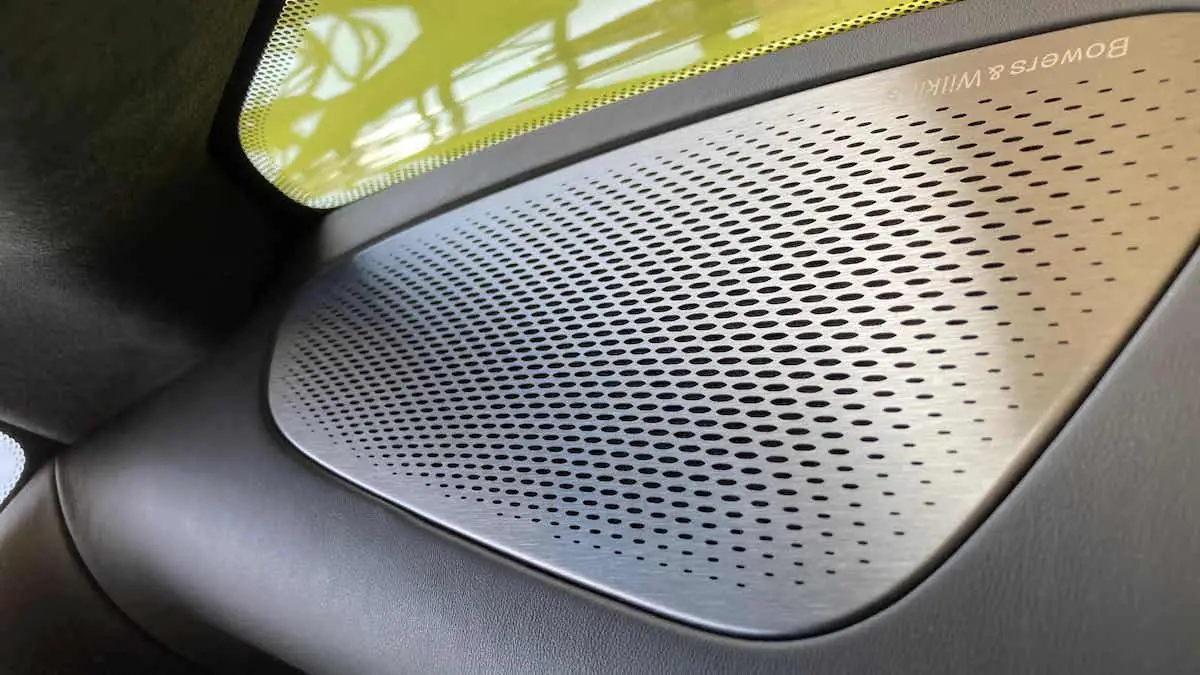

Bowers & Wilkins power
That low level of road noise also allows you to better appreciate the optional 4,780-euro Bowers & Wilkins high-end audio system that features 12 speakers powered by a 1,280-watt amplifier. This amplifier includes QuantumLogic Surround technology to accurately identify and redistribute audio streams.
Dynamic EQ processing allows a more precise adjustment of external sounds while Clari-Fi technology provides real-time restoration of low-quality audio signals. This is the first time Apple CarPlay and Android capability is standard in a McLaren.
The speaker system uses B&W’s patented Continuum cones, which they claim has better damping and a better response than Kevlar. A nod to the fact that B&W worked closely with McLaren from day one is shown by the incorporation of the two subwoofers into the front of the carbon monocoque chassis. This guarantees extremely stable physical placement along with lack of rattles as can happen with more conventional placement. The result is a dynamic bass performance that underpins the open mid-range and soaring highs.
Using familiar tracks via USB-A we found the system to be dynamic and able to resolve detail within a convincing soundstage. Importantly the tonal balance is very neutral so it does not favour one kind of music over another. Our test tracks covered everything from Jazz to Opera, and we enjoyed listening to many familiar tracks on this system, which is what counts the most in the end.
Daily driver
Mid-engine cars are not known for great over-shoulder visibility, but McLaren has learned a lot from working very effectively on this very important practical aspect for the 720S Spider. Thus the view past the Artura’s aerodynamically shaped flying buttresses is good when manoeuvring at low speeds, and is further enhanced by the wide-angle reversing camera. Its image in the instrument panel is supported by a computer-generated bird’s eye view of the car and its surroundings on the central infotainment screen.
Those flying buttresses are part of an aerodynamic system that encourages negative lift while channelling cooling air to the engine lid grille. The system is so effective that the chimney effect created on the move helps to reduce the temperatures in the hot-Vee of the motor from 900-degrees C to just 240-degrees C!
It is hard to believe that it is almost exactly a decade since the McLaren P1 broke cover using partial electrification to boost the power of its internal combustion engine.
The lessons learned in the interim have allowed McLaren to take the electric power boost technology to the next level as well as providing 31 km (19 miles) worth of real world EV only driving range. The car always starts in E-Mode, and can be driven at up to 130km/h on pure electric power.
Living in harmony
The combustion motor and E-motor are designed in such a way that the battery is charged by the former on the move. McLaren believes in pure feedback from the controls so there is no electric steering or brake regeneration. By the same token the design brief called for maximum charging of the battery so that it would be available for use throughout an intensive track day.
The test drivers were able to do 10 laps of Nardo, which is over 60 km with no battery degradation. We started our two sessions at Ascari with a 92% charge showing and returned to the pits with the gauge reading 99% after each, which proves their point.
The Artura is not the new entry-level McLaren as some pundits assumed after the 540C/570S range was retired. Au contraire, the GT now occupies that role, with the Artura sharing the Supercar category with the 720S, and the Ultimate series retaining its flagship position.
In performance terms the loss of two cylinders has not compromised the new Artura one iota. If anything the substantial torque contribution of the E-motor adds a whole new dimension to its raw speed, flexibility and fuel economy.
Conclusion on the McLaren Artura
The McLaren Artura looks and feels like a well thought out and fully resolved supercar for our times, and certainly moves the game up a notch. Its debut was delayed around half a year by supply chain issues amongst other things, but we are happy to say that the wait has been worth it.
- Price McLaren Artura: from around 226,000 euros
- Price Bowers & Wilkins sound system: 4,780 euros
- More info: cars.mclaren.com
STEREO GUIDE Verdict
+ excellent performance and driving dynamics
+ good ergonomics and everyday drivability
+ dynamic and superbly tuned B&W audio system
- complex technology on launch cars not 100% reliable
-
Sound quality9.2
-
Price/Performance sound system9.3






